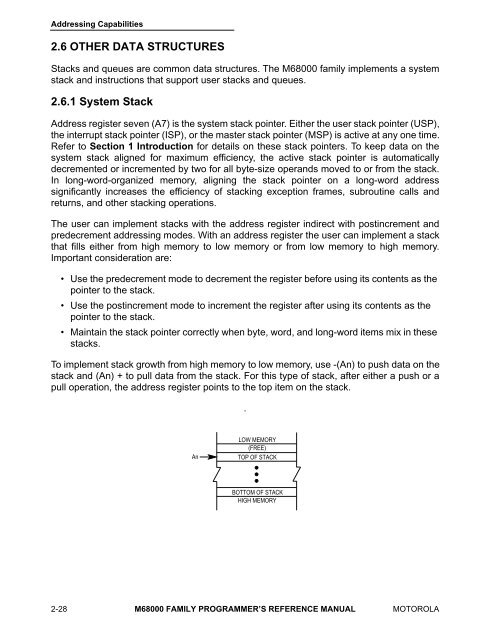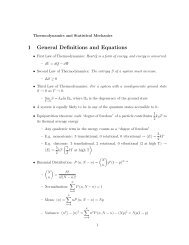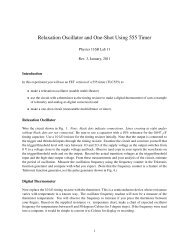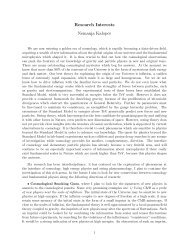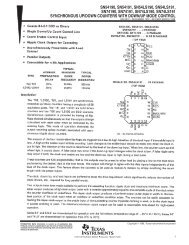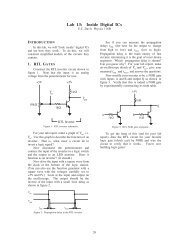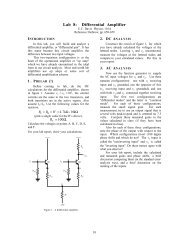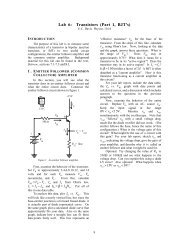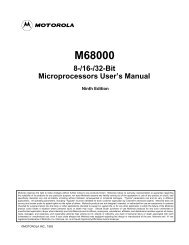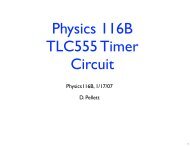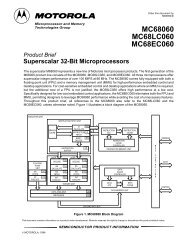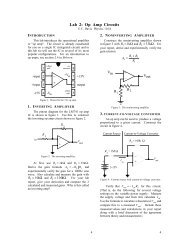Excerpts for 116B (224KB)
Excerpts for 116B (224KB)
Excerpts for 116B (224KB)
Create successful ePaper yourself
Turn your PDF publications into a flip-book with our unique Google optimized e-Paper software.
Addressing Capabilities<br />
2.6 OTHER DATA STRUCTURES<br />
Stacks and queues are common data structures. The M68000 family implements a system<br />
stack and instructions that support user stacks and queues.<br />
2.6.1 System Stack<br />
Address register seven (A7) is the system stack pointer. Either the user stack pointer (USP),<br />
the interrupt stack pointer (ISP), or the master stack pointer (MSP) is active at any one time.<br />
Refer to Section 1 Introduction <strong>for</strong> details on these stack pointers. To keep data on the<br />
system stack aligned <strong>for</strong> maximum efficiency, the active stack pointer is automatically<br />
decremented or incremented by two <strong>for</strong> all byte-size operands moved to or from the stack.<br />
In long-word-organized memory, aligning the stack pointer on a long-word address<br />
significantly increases the efficiency of stacking exception frames, subroutine calls and<br />
returns, and other stacking operations.<br />
The user can implement stacks with the address register indirect with postincrement and<br />
predecrement addressing modes. With an address register the user can implement a stack<br />
that fills either from high memory to low memory or from low memory to high memory.<br />
Important consideration are:<br />
• Use the predecrement mode to decrement the register be<strong>for</strong>e using its contents as the<br />
pointer to the stack.<br />
• Use the postincrement mode to increment the register after using its contents as the<br />
pointer to the stack.<br />
• Maintain the stack pointer correctly when byte, word, and long-word items mix in these<br />
stacks.<br />
To implement stack growth from high memory to low memory, use -(An) to push data on the<br />
stack and (An) + to pull data from the stack. For this type of stack, after either a push or a<br />
pull operation, the address register points to the top item on the stack.<br />
.<br />
An<br />
LOW MEMORY<br />
(FREE)<br />
TOP OF STACK<br />
BOTTOM OF STACK<br />
HIGH MEMORY<br />
2-28 M68000 FAMILY PROGRAMMER’S REFERENCE MANUAL MOTOROLA


